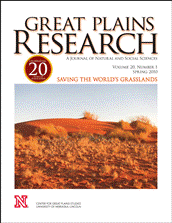Center for Great Plains Studies

Great Plains Research: A Journal of Natural and Social Sciences (through 2013)
Date of this Version
2008
Document Type
Article
Abstract
The relationships among seasonal change, population dynamics, social pressures, landscape dynamics, anthropologic disturbances, and behavioral ecology are complex. Therefore, migration and seasonal movements are poorly understood and dispersal continues to be one of the least understood aspects of animal ecology in North America. We reviewed scientific literature on movements of mule deer (Odocoileus hemionus) and white-tailed deer (O. virginianus) in western and midwestern landscapes to identify gaps in our knowledge and direct future research. We used electronic databases, library catalogs, Internet search engines, and peer-reviewed journals to conduct key word searches for pertinent articles. We found that deer disperse due to habitat conditions and social pressures that are based on seasonal influences. Dispersal rates and distances vary regionally and are influenced by landscape characteristics and competition for resources such as food, cover, and mates. Migration and dispersal may influence local population levels. Decisions to manipulate densities, sex ratios, and age structures should account for local deer movements.


Comments
Published in Great Plains Research, 18:2 (Fall 2008) 219-31. Copyright © 2008 by the Center for Great Plains Studies, University of Nebraska-Lincoln